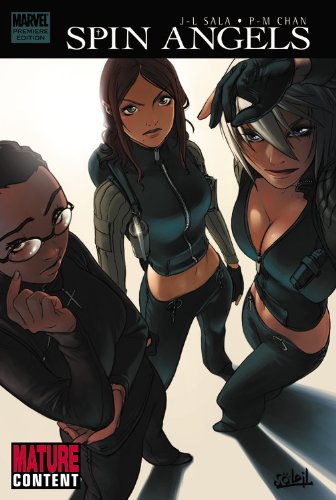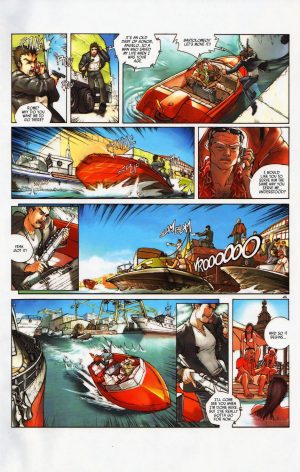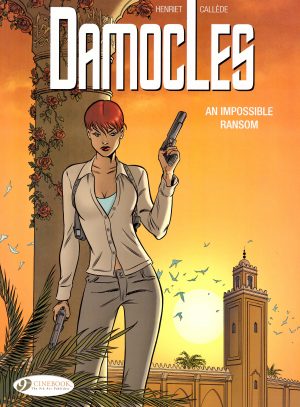Review by Frank Plowright
Spin Angels was issued as part of Marvel’s short run 2008 experiment in translating European action series for the American market, and the nearest of the titles to approach the traditional Marvel action comic. Unfortunately this hardcover only collects the first four volumes of Jean-Luc Sala and Pierre-Mony Chan’s continuing series, which eventually ran to eight in France, where it was titled Cross Fire. Know going in that you’re getting four complex action thrillers, but the story doesn’t finish here.
In the 13th century the Catholic church crushes a rogue sect, but their sacred objects are spirited away. The Vatican’s still looking for them almost seven hundred years later, and maintains the equivalent of a black ops squad to do so, run by a Cardinal Marchesi. They’re also tasked with collecting any historical information and artefacts that may contradict official teachings. In the first story events are seen going a little pear-shaped, so a favour is called in and Sofia D’Agostino finds herself working with Angelo Constanza, Mafia hitman. If that seems contrary to religious doctrine, Sala reveals soon after that there’s something extremely rotten embedded deep in the Vatican.
The provocative cover illustration doesn’t really represent the content until midway through the third chapter of four. Attractive women feature in Spin Angels, and can be objectified, but there’s a lot more going on. Chan’s art combines manga stylings with the standard European action demands of distant views of full backgrounds. The action scenes have a vitality, but not always in a way that clarifies exactly what’s happening. On the other hand, there’s lot packed into each of the four chapters, and Chan doesn’t avoid the necessary work.
While primarily producing an action thriller, Sala frequently includes Biblical quotes, and doesn’t shy away from church factionalism and theological discussion, particularly in flashback sequences showing the Vatican agents at times in the past. One of those who features becomes important in the present day, and running between the bouts of desperate action there are some heavy dumps of information. While they feed the plot, long wordy discussions reinterpreting ancient events isn’t thrilling.
Sala’s tying into the zeitgeist of the early 21st century when stories undermining the truths of the Catholic church proliferated. It’s clever in using scraps of information to present a convincing picture, but it’s not compelling. However, Sala drops one hell of a cliffhanger on the final page concerning the manipulative behind the scenes menace. For anyone wanting to pick up from there, it’s not too difficult to locate the continuation in English online.





